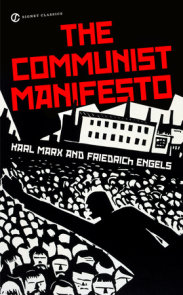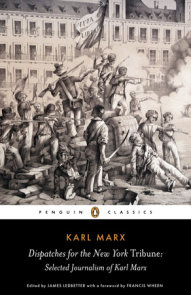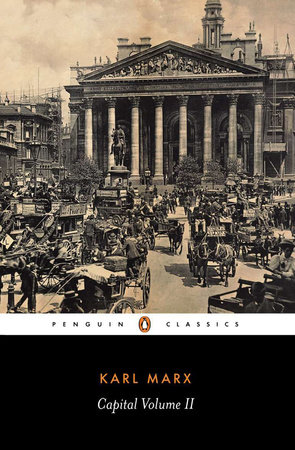

Grundrisse
By Karl Marx
Introduction by Martin Nicolaus
Translated by Martin Nicolaus
By Karl Marx
Introduction by Martin Nicolaus
Translated by Martin Nicolaus
Category: Business | Classic Nonfiction | Domestic Politics

-
$22.00
Nov 07, 1993 | ISBN 9780140445756
Buy the Paperback:
YOU MAY ALSO LIKE
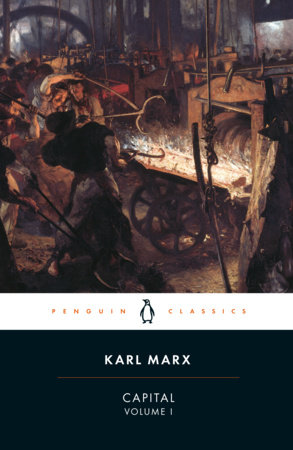
Capital
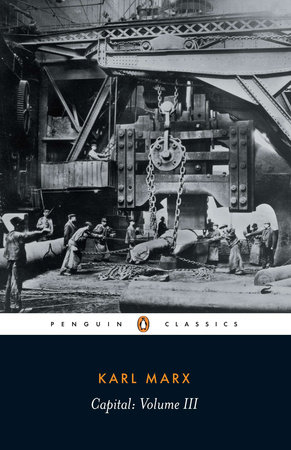
Capital
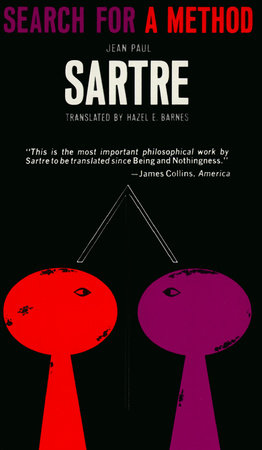
Search for a Method
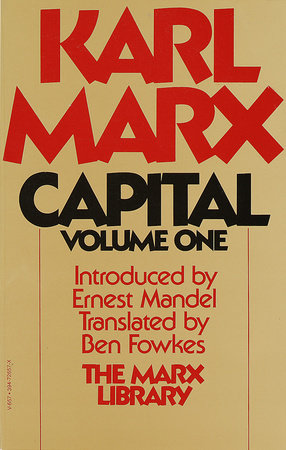
Capital
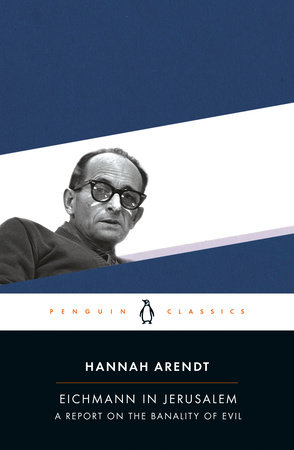
Eichmann in Jerusalem
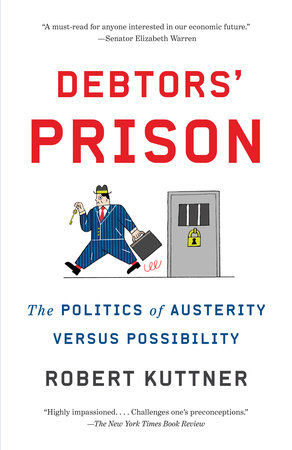
Debtors’ Prison
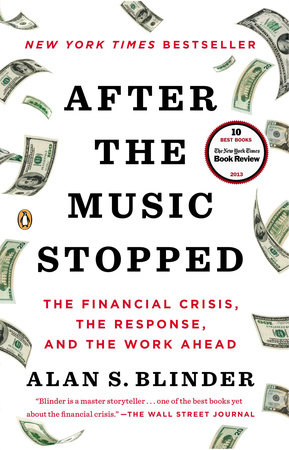
After the Music Stopped
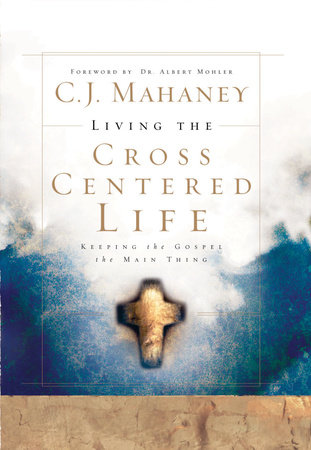
Living the Cross Centered Life
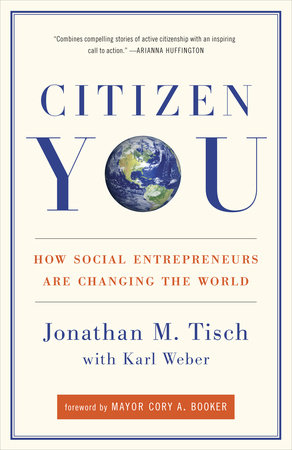
Citizen You
Table Of Contents
Introduction (Notebook M)1. Production in general
2. General relation between production, distribution, exchange and consumption
3. The method of political economy
4. Means (forces) of production and relations of production, relations of production and relations of circulation
The Chapter on Money (Notebooks I and II, pp. 1-7)Darimon’s theory of crises
Gold export and crises
Convertibility and note circulation
Value and price
Transformation of the commodity into exchange value; money
Contradictions in the money relation:
(1) Contradiction between commodity as product and commodity as exchange value
(2) Contradiction between purchase and sale
(3) Contradiction between exchange for the sake of exchange and exchange for the sake of commodities
(4) Contradiction between money as particular commodity and money as general commodity (The Economist and the Morning Star on money)
Attempts to overcome the contradictions by the issue of time-chits
Exchange value as mediation of private interests
Exchange value (money) as social bond
Social relations which create an undeveloped system of exchange
The product becomes a commodity; the commodity becomes exchange value; the exchange value of the commodity becomes money
Money as measure
Money as objectification of general labour time (Incidental remark on gold and silver)
Distinction between particular labor time and general labour time
Distinction between planned distribution of labour time and measurement of exchange values by labour time (Strabo on money among the Albanians)
The precious metals as subjects of the money relation:
(a) Gold and silver in relation to the other metals
(b) Fluctuations in the value-relations between the different metals
(c) and (d) (headings only): Sources of gold and silver; money as coin
Circulation of money and opposite circulation of commodities
General concept of circulation:
(a) Circulation circulates exchange values in the form of prices (Distinction between real money and accounting money)
(b) Money as the medium of exchange (What determines the quantity of money required for circulation) (Comment on (a))
Commodity circulation requires appropriation through alienation
Circulation as an endlessly repeated process
The price as external to and independent of the commodity: Creation of general medium of exchange; exchange as a special business
Double motion of circulation: C-M; M-C, and M-C; C-M
Three contradictory functions of money:
(1) Money as general material of contracts, as measuring unit of exchange values
(2) Money as medium of exchange and realizer of prices
(Money, as representative of price, allows commodities to be exchanged at equivalent prices)
(An example of confusion between the contradictory functions of money)
(Money as particular commodity and money as general commodity)
(3) Money as money: as material representative of wealth (accumulation of money)
(Dissolution of ancient communities through money)
(Money, unlike coin, has a universal character)
(Money in its third function is the negation #negative unity# of its character as medium of circulation and measure)
(Money in its metallic being; accumulation of gold and silver)
(Headings on money, to be elaborated later)
The Chapter on Capital (Notebooks II pp. 8-28, III, IV, V, VI and VII)The Chapter on Money as Capital:
Difficulty in grasping money in its fully developed character as money
Simple exchange: relations between the exchangers (Critique of socialists and harmonizers: Bastiat, Proudhon)
Section One: The Production Process of Capital
Nothing is expressed when capital is characterized merely as a sum of values
Landed property and capital
Capital comes from circulation; its content is exchange value; merchant capital, money capital, and money interest
Circulation presupposes another process; motion between presupposed extremes
Transition from circulation to capitalist production
“Capital is accumulated labour (etc.)”
“Capital is a sum of values used for the production of values”
Circulation, and exchange value deriving from circulation, the presupposition of capital
Exchange value emerging from circulation, a presupposition of ciruclation, preserving and multiplying itself in it by means of labour
Product and capital. Value and capital. Proudhon
Capital and labour. Exchange value and use value for exchange value
Money and its use value (labour) in this relation capital: Self-multiplication of value is its only movement
Capital, as regards substance, objectified labour. Its antithesis, living, productive labour
Productive labour and labour as performance of a service
Productive and unproductive labour. A. Smith etc.
The two different processes in the exchange of capital with labour
Capital and modern landed property
The market
Exchange between capital and labour. Piecework wages
Value of labour power
Share of the wage labourer in general wealth determined only quantitatively
Money is the worker’s equivalent; he thus confronts capital as an equal
But the aim of his exchange is satisfaction of his need. Money for him is only medium of circulation
Savings, self-denial as means of the worker’s enrichment
Valuelessness and devaluation of the worker a condition of capital
(Labour power as capital!)
Wages not productive
The exchange between capital and labour belongs within simple circulation, does not enrich the worker
Separation of labour and property the precondition of this exchange
Labour as object absolute poverty, labour as subject general possibility of wealth
Labour without particular specificity confronts capital
Labour process absorbed into capital
(Capital and capitalist)
Production process as content of capital
The worker relates to his labour as exchange value, the capitalist as use value
The worker divests himself of labour as the wealth-producing power; capital appropriates it as such
Tranformation of labour into capital
Realization process
(Costs of production)
Mere self-preservation, non-multiplication of value contradicts the essence of capital
Capital enters the cost of production as capital. Interest bearing capital (Parentheses on: original accumulation of capital, historic presuppositions of capital, production in general)
Surplus value. Surplus labour time
Value of labour. How it is determined
Conditions for the self-realization of capital
Capital is productive as creator of surplus labour
But this is only a historical and transitory phenomenon
Theories of surplus value (Ricardo; the Physiocrats; Adam Smith; Ricardo again)
Surplus value and productive force. Relation when these increase
Result: in proportion as necessary labour is already diminished, the realization of capital becomes more difficult
Concerning increases in the value of capital
Labour does not reproduce the value of material and instrument, but rather preserves it by relating to them in the labour process as to their objective conditions
Absolute surplus labour time. Relative
It is not the quantity of living labour, but rather its quality as labour which preserves the labour time already contained in the material
The change of form and substance in the direct production process
It is inherent in the simple production process that the previous stage of production is preserved through the subsequent one
Preservation of the old use value by new labour
The quantity of objectified labour is preserved because contact with living labour preserves its quality as use value for new labour
In the real production process, the separation of labour from its objective moments of existence is suspended. But in this process labour is already incorporated in capital
The capitalist obtains surplus labour free of charge together with the maintenance of the value of material and instrument
Through the appropriation of present labour, capital already possesses a claim to the appropriation of future labour
Confusion of profit and surplus value. Carey’s erroneous calculation
The capitalist, who does not pay the worker for the preservation of the old value, then demands remuneration for giving the worker permission to preserve the old capital
Surplus Value and Profit
Difference between consumption of the instrument and of wages. The former consumed in the production process, the latter outside it
Increase of surplus value and decrease in rate of profit
Multiplication of simultaneous working days
Machinery
Growth of the constant part of capital in relation to the variable part spent on wages=growth of the productivity of labour
Proportion in which capital has to increase in order to employ the same number of workers if productivity rises
Percentage of total capital can express very different relations
Capital (like property in general) rests on the productivity of labour
Increase of surplus labour time. Increase of simultaneous working days. (Population)
(Population can increase in proportion as necessary labour time becomes smaller)
Transition from the process of the production of capital into the process of circulation
Section Two: The Circulation Process of Capital
Devaluation of capital itself owing to increase of productive forces
(Competition)
Capital as unity and contradiction of the production process and the realization process
Capital as limit to production. Overproduction
Demand by the workers themselves
Barriers to capitalist production
OVerproduction; Proudhon
Price of the commodity and labour time
The capitalist does not sell too dear; but still above what the thing costs him
Price can fall below value without damage to capital
Number and unit (measure) important in the multiplication of prices
Specific accumulation of capital. (Transformation of surplus labour into capital)
The determination of value and of prices
The general rate of profit
If the capitalist merely sells at his own cost of production, then it is a transfer to another capitalist. The worker gains almost nothing thereby
Barrier of capitalist production. Relation of surplus labour to necessary labour. Proportion of the surplus consumed by capital to that transformed into capital
Devaluation during crises
Capital coming out of the production process becomes money again
(Parenthesis on capital in general)
Surplus Labour or Surplus Value Becomes Surplus Capital
All the determinants of capitalist production now appear as the result of (wage) labour itself
The realization process of labour at the same time its de-realization process
Formation of surplus capital I
Surplus capital II
Inversion of the law of appropriation
Chief result of the production and realization process
Original accumulation of capital
Once developed historically, capital itself creates the conditions of its existence
(Performance of personal services, as opposed to wage labour)
(Parenthesis on inversion of the law of property, real alien relation of the worker to his product, division of labour, machinery)
Forms which precede capitalist production. (Concerning the process which precedes the formation of the capital relation or of original accumulation)
Exchange of labour for labour rests on the worker’s propertylessness
Circulation of capital and circulation of money
Production process and circulation process moments of production. The productivity of the different capitals (branches of industry) determines that of the individual capital
Circulation period. Velocity of circulation substitutes for volume of capital. Mutual dependence of capitals in the velocity of their circulation
The four moments in the turnover of capital
Moment II to be considered here: transformation of the product into money; duration of this operation. Transport costs. Circulation costs. Means of communication and transport
Division of the branches of labour
Concentration of many workers; productive force of this concentration
General as distinct from particular conditions of production
Transport to market (spatial condition of circulation) belongs in the production process
Credit, the temporal moment of circulation
Capital is circulating capital
Influence of circulation on the determination of value; circulation time=time of devaluation
Difference between the capitalist mode of production and all earlier ones (universality, propagandistic nature)
(Capital itself is the contradiction)
Circulation and creation of value
Capital not a source of value-creation
Continuity of production presupposes suspension of circulation time
Theories of Surplus Value
Ramsay’s view that capital is its own source of profit
No surplus value according to Ricardo’s law
Ricardo’s theory of value. Wages and profit
Quincey
Ricardo
Wakefield. Conditions of capitalist production in colonies
Surplus value and profit. Example (Malthus)
Difference between labour and labour capacity
Carey’s theory of the cheapening of capital for the worker
Carey’s theory of the decline of the rate of profit
Wakefield on the contradiction between Ricardo’s theories of wage labour and of value
Bailey on dormant capital and increase of production without previous increase of capital
Wade’s explanation of capital. Capital, collective force. Capital, civilization.
Rossi. What is capital? Is raw material capital? Are wages necessary for it?
Malthus. Theory of value and of wages
Aim of capitalist production value (money), not commodity, use value etc. Chalmers
Difference in return. Interruption of the production process. Total duration of the production process. Unequal periods of production
The concept of the free labourer contains the pauper. Population and overpopulation
Necessary labour. Surplus labour. Surplus population. Surplus capital
Adam Smith: work as sacrifice
Adam Smith: the origin of profit
Surplus labour. Profit. Wages
Immovable capital. Return of capital. Fixed capital. John Stuart Mill
Turnover of capital. Circulation process. Production process. Circulation costs. Circulation time
Capital’s change of form and of substance; different forms of capital; circulation capital as general character of capital
Fixed (tied down) capital and circulating capital
Constant and variable capital
Competition
Surplus value. Production time. Circulation time. Turnover time
Competition (continued)
Part of capital in production time, part in circulation time
Surplus value and production phase. Number of reproductions of capital = number of turnovers
Change of form and of matter in the circulation of capital. C-M-C. M-C-M
Difference between production time and labour time
Formation of a mercantile estate; credit
Small-scale circulation. The process of exchange between capital and labour capacity generally
Threefold character, or mode, of circulation
Fixed capital and circulating capital
Influence of fixed capital on the total turnover time of capital
Fixed capital. Means of labour. Machine
Transposition of powers of labour into powers of capital both in fixed and in circulatin capital
To what extent fixed capital (machine) creates value
Fixed capital and continuity of the production process. Machinery and living labour.
Contradiction between the foundation of bourgeois production (value as measure) and its development
Significance of the development of fixed capital (for the development of capital generally)
The chief role of capital is to create disposable time; contradictory form of this in capital
Durability of fixed capital
Real saving (economy)=saving of labour time=development of productive force
True conception of the process of social production
Owen’s historical conception of industrial (capitalist) production
Capital and value of natural agencies
Scope of fixed capital indicates the level of capitalist production
Is money fixed capital or circulating capital?
Turnover time of capital consisting of fixed capital and circulating capital. Reproduction time of fixed capital
The same commodity sometimes circulating capital, sometimes fixed capital
Every moment which is a presupposition of production is at the same time its result, in that it reproductes its own conditions
The counter-value of circulating capital must be produced within the year. Not so for fixed capital. It engages the production of subsequent years
Maintanence costs of fixed capital
Revenue of fixed capital and circulating capital
Free labour=latent pauperism. Eden
The smaller the value of fixed capital in relation to its product, the more useful
Movable and immovable, fixed and circulating
Connection of circulation and reproduction
Section Three: Capital as Fructiferous. Tranformation of Surplus Value into Profit
Rate of profit. Fall of the rate of profit
Surplus value as profit always expresses a lesser proportion
Wakefield, Carey and Bastiat on the rate of profit
Capital and revenue (profit). Production and distribution. Sismondi
Transformation of surplus value into profit
Laws of this and transformation
Surplus value=relation of surplus labour to necessary labour
Value of fixed capital and its productive power
Machinery and surplus labour. Recapitulation of the doctrine of surplus value generally
Relation between the objective conditions of production. Change in the proportion of the component parts of capital
Miscellaneous
Money and fixed capital: presupposes a certain amount of wealth. Relation of fixed capital and circulating capital (Economist)
Slavery and wage labour; profit upon alienation (Steuart)
Steuart, Montanari and Gouge on money
The wool industry in England since Elizabeth; silk-manufacture; iron; cotton
Origin of free wage labour. Vagabondage. (Tuckett)
Blake on accumulation and rate of profit; dormant capital
Domestic agriculture at the beginning of the sixteenth century. (Tuckett)
Profit. Interest. Influence of machinery on the wage fund. (Westminster Review)
Money as measure of values and yardstick of prices. Critique of theories of the standard measure of money
Transformation of the medium of circulation into money. Formation of treasures. Means of payment. Prices of commodities and quantity of circulating money. Value of money
Capital, not labour, determines the value of money (Torrens)
The minimum of wages
Cotton machinery and working men in 1826. (Hodgskin)
How the machine creates raw material. (Economist)
Machinery and surplus labour
Capital and profit. Relation of the worker to the conditions of labour in capitalist production. All parts of capital bring a profit
Tendency of the machine to prolong labour
Cotton factories in England. Example for machinery and surplus labour
Examples from Glasgow for the rate of profit
Alienation of the conditions of labour with the development of capital. Inversion
Merivale. Natural dependence of the worker in colonies to be replaced by artificial restrictions
How the machine saves material. Bread. Dureau de la Malle
Development of money and interest
Productive consumpion. Newman. Transformations of capital. Economic cycle
Dr. Price. Innate power of capital
Proudhon. Capital and simple exchange. Surplus
Necessity of the worker’s propertylessness
Galiani
Theory of savings. Storch
MacCulloch. Surplus. Profit
Arnd. Natural interest
Interest and profit. Carey
How merchant takes the place of master
Merchant wealth
Commerce with equivalents impossible. Opdyke
Principal and interest
Double standard
On money
James Mill’s false theory of prices
Ricardo on currency
On money
Theory of foreign trade. Two nations may exchange according to the law of profit in such a way that both gain, but one is always defrauded
Money in its third role, as money
(I) Value (This section to be brought forward)
Bastiat and Carey
Bastiat’s economic harmonies
Bastiat on wages
21 Books You’ve Been Meaning to Read
Just for joining you’ll get personalized recommendations on your dashboard daily and features only for members.
Find Out More Join Now Sign In










